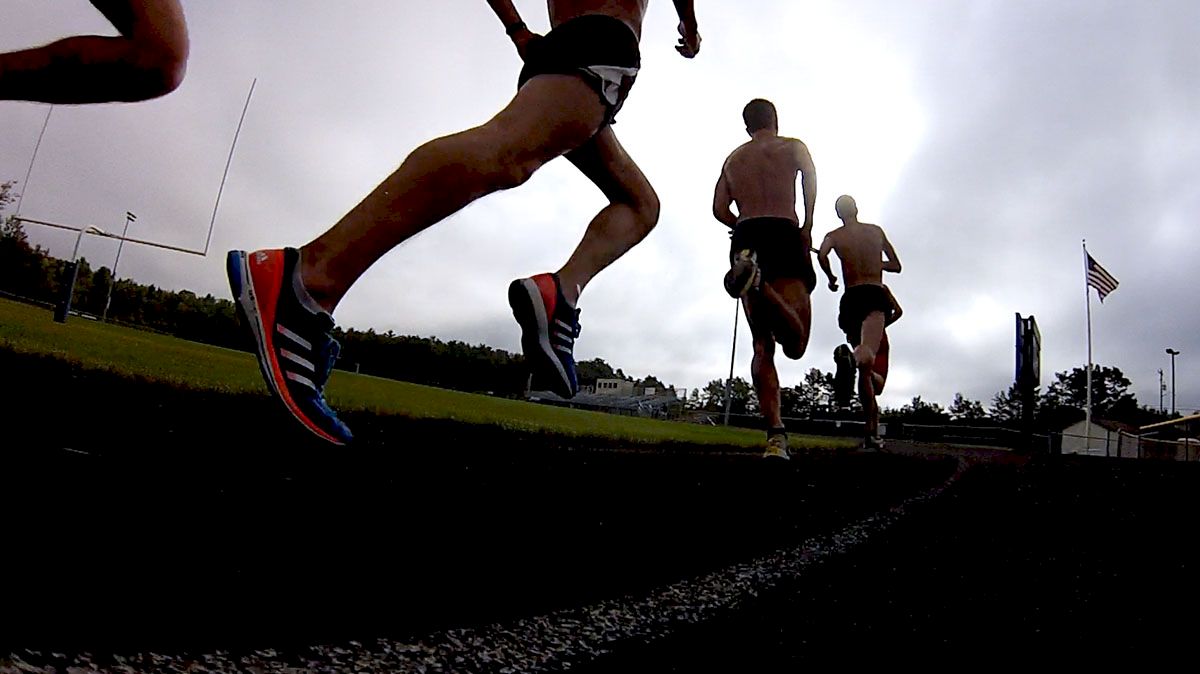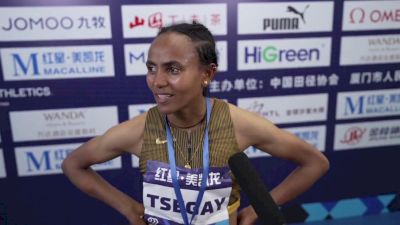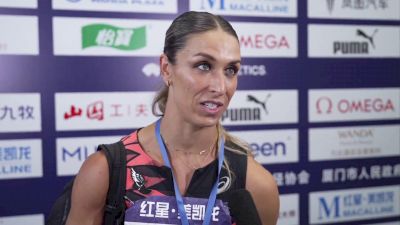2013 Indoor Track and Field on FlotrackFeb 9, 2013 by Mitch Kastoff
The Idea of Barriers and Making NCAAs
The Idea of Barriers and Making NCAAs

There are mythical and symmetrical barriers in track and field. 4:00 in the mile, 8:00 in the 3k, and 1:50 in the 800m are all holy grails of varying degrees in distance running. If those times are broken so often, are they really barriers anymore?
The Husky Classic once again proves that if you want to run fast, go west young men (and women).
We were all wondering when the Sweet 16 bubble was going to burst. The Husky Classic seemed like a safe bet and after this afternoon, things got real in the chase to snag those coveted top sixteen spots. The men’s races gave us a total of 44 athletes who shattered these "legendary" marks.
Men's Husky Classic - By The Numbers
- 23 men broke 8:00 in the 3000m
- 8 men broke 4:00 in the mile
- 13 men broke 1:50 in the 800m
The women’s barriers aren’t as evenly rounded, but they’re impressive times nonetheless.
Women's Husky Classic - By The Numbers
- 5 women went sub-4:35 in the mile
- 10 women went sub-9:10 the 3000m
While everyone and their mother were being towed to barrier-breaking times out at the Dempsey, the two NCAA champions were wreaking havoc elsewhere.
Friday evening, Texas Tech’s Kennedy Kithuka crushed a solo 13:26.65 5000m at the Tyson Invitational. Fans at the meet reported that he was smiling all the way to the finish. Texas Tech reported that he took a lap around the Tyson Track to shake some hands. The only thing that would have been more impressive is it he was wearing his trademark winter hat.
How good was his solo run?
How good was his solo run?
Kennedy Kithuka - By The Numbers
- 17-seconds faster than the national leader
- 1:00 minute ahead of second place, Dan Quigley
The other fall champion, Iowa State’s Betsy Saina, was busy back at her home invitational. ISU alumnus Lisa Uhl rabbited Saina to an incredible 15:21.66 finish in Ames, IA. Rather than try and explain her performance, we’ll let the numbers speak for themselves.
Betsy Saina - By The Numbers
- 22-seconds faster than the previous world lead
- 8-seconds faster than Uhl’s record from 2010
- 5th fastest 5k ever run by a collegiate
- 20-seconds slower than the all-time best indoor collegiate 5k mark (that was a mouthful), 15:01.70 set by Jenny Simpson in ’09.
The cross country champs may have been throwing down fast 5ks, but what about the outdoor 1500m champ, Andy Bayer.
One of Indiana’s finest didn’t just break one barrier at the Hoosier Hills Invitational, but two (not technically). On day one, Bayer anchored IU’s 9:33.42 DMR in 3:58.5. Yes, that was for 1600m and was on the fly, but it converts to 3:59.88 for the full mile. Don’t rain on this parade.
The next day, Bayer doubled back to finish second in the men’s 3k with a time of 7:51.75. Not bad for a guy who was in a boot at NCAAs in November.
Full Results - 2013 Hoosier Hills
Full Results - 2013 Hoosier Hills
All of this wild action proves that barriers are simply ideas. This indoor season, what matters isn’t necessarily time, but place.
In a recent blog post, Track Super Fan Jesse Squire asked, “What’s the point of racing?” It’s an incomplete reason, but the answer is within one of his own questions. Squire asks, “... it’s better to run fast and be fourth or fifth than to run slower and win.”
If you were at the University of Washington this weekend, you needed both. Last year, the 16th fastest time in the NCAA in the men’s 3k was 7:52.38 by OSU’s Tom Farrell. This evening, that same time would have placed you seventh out at the Husky Classic.
Any of those guys between 7:53 and 7:55 (there were six) could have been in the hunt on the final lap at the Dempsey. Tonight, they weren’t. Tomorrow, they could be there with 100m to go.
If NCAA indoors was hyper-organized in the style of let’s say the Diamond League, then wins and loses would matter. Beating someone else would reign supreme over fast times. But, well, that’s something more reserved for late night dreams and back room discussions among idealistic bloggers.
Until then, it’s still going to take fast times to make it to Fayetteville. Athletes could set up individual time trials, but right now, the best alternative is to travel to these marquee races and hope for the best.
If that’s the case, these athletes are going to have to be fit, ready to roll on the bell lap, and be clear of as many competitors as possible when they cross the line.
If that’s the case, these athletes are going to have to be fit, ready to roll on the bell lap, and be clear of as many competitors as possible when they cross the line.
Related Content
 Christian Coleman Grabs Win In Season Opener In 100m In Xiamen
Christian Coleman Grabs Win In Season Opener In 100m In XiamenApr 20, 2024
 Mondo Duplantis Raises Pole Vault World Record In Season Opener In Xiamen
Mondo Duplantis Raises Pole Vault World Record In Season Opener In XiamenApr 20, 2024
 Gudaf Tsegay Clocks No. 3 All-Time 1,500m In Season Opener
Gudaf Tsegay Clocks No. 3 All-Time 1,500m In Season OpenerApr 20, 2024
 Sam Kendricks Second In Men's Pole Vault In Xiamen
Sam Kendricks Second In Men's Pole Vault In XiamenApr 20, 2024
 Beatrice Chepkoech Puts On Masterclass Effort In Xiamen Women's 3k Steeplechase
Beatrice Chepkoech Puts On Masterclass Effort In Xiamen Women's 3k SteeplechaseApr 20, 2024
 Daniel Roberts Clocks World Lead To Win Xiamen Diamond League 110mH
Daniel Roberts Clocks World Lead To Win Xiamen Diamond League 110mHApr 20, 2024
 Valarie Allman Starts Season With Win In Stacked Xiamen Women's Discus Field
Valarie Allman Starts Season With Win In Stacked Xiamen Women's Discus FieldApr 20, 2024
 Marco Arop Clocks 1:43 For 800m Win In Xiamen
Marco Arop Clocks 1:43 For 800m Win In XiamenApr 20, 2024
 Shelby McEwen Takes Men's High Jump Win At Xiamen Diamond League
Shelby McEwen Takes Men's High Jump Win At Xiamen Diamond LeagueApr 20, 2024